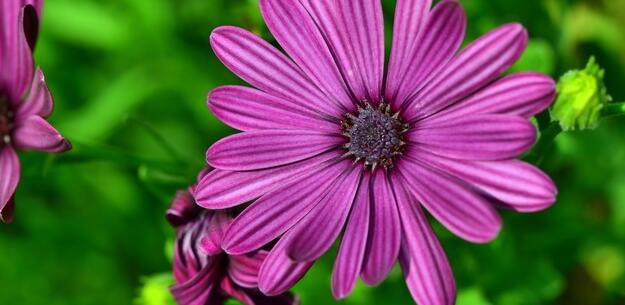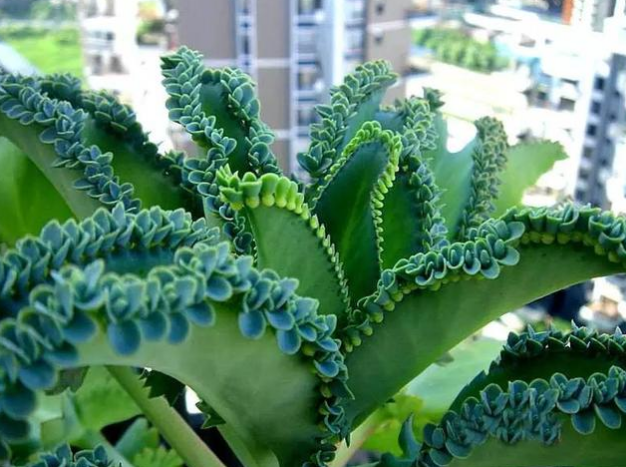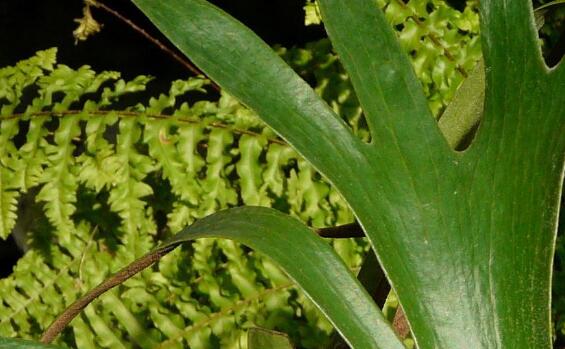Pay attention to five skills of how to raise blue mu chrysanthemum
How to raise blue chrysanthemum? Blue-eye chrysanthemum is a good ornamental flower, the cultivation of blue-eye chrysanthemum needs certain skills, how to raise blue-eye chrysanthemum? Next, let's take a look at the main points of blue chrysanthemum culture with the editor.

Introduction of Lan Mu Ju:
Blue eye chrysanthemum alias African daisy, big flower blue eye chrysanthemum. Originally from South Africa, it is not resistant to cold. Avoid hot, suitable temperature 18 ℃ ~ 26 ℃, prefer sunny environment, suitable for soil with good drainage. Blue chrysanthemum plants are highly 20--60cm, basal leaves clustered, cauline leaves alternate, usually pinnatifid. Capitate inflorescences solitary, involucre tomentose, ligulate flowers white, abaxially lavender, discoid blue-purple. Achenes furrowed, villous. Blue chrysanthemum is a semi-shrub or perennial perennial herb with a height of 20cm and 60cm. Basal leaves clustered, cauline leaves alternate, pinnatifid. Blue chrysanthemum terminal head, the central blue-purple tubular flowers, tongue petal flowers, flowers are white, purple, light, orange and so on. Blue mu chrysanthemum is an annual herb with a height of 50 to 80 box meters, its stem is smooth and the upper part of the branch is pinnately parted into a linear shape. Capitate inflorescence terminal, its slender peduncle, ligulate flowers in a single whorl, middle and lower reddish brown, florescence for summer and autumn.
How to raise blue chrysanthemum:
1. Temperature
Given the appropriate temperature according to the requirements of specific varieties, the germination temperature of most seeds is between 20 and 25 ℃. Too high and too low temperature will directly affect the germination rate of seeds.
two。 Humidity
The management of moisture after sowing is very important. In winter, when the soil temperature is low at night, there is little water loss, so there is no need to replenish water or less water at the seedling stage; if the soil temperature is high, spray water should be sprayed according to the actual needs at the seedling stage. When raising seedlings in summer, water evaporates very quickly, and water must be replenished at any time according to the actual situation. If the seed is very fine, in order to avoid the erosion of water, the method of soaking basin can be used to replenish water. # p# subtitle # e #
3. Light
Except for some varieties such as cyclamen that need darkness during germination, most seeds are conducive to germination under light conditions. Seeds must be exposed to light after germination, otherwise the seedlings will grow too much.
4. Remove the cover
After the seeds germinate, the mulch should be uncovered in time. 60% of 70% of the seeds should remove the membrane after the cotyledons are unfolded to prevent the seedlings from overgrowing. At the same time, the humidity of the substrate should be maintained so that the cotyledons of some ungerminated seeds protrude successfully from the seed shell.
5. Transplant
When the seedlings grow to be suitable for transplanting, they should be planted or planted in time, otherwise it is easy to cause excessive growth of seedlings and production delay. The time of transplanting all kinds of seedlings is different, which should be decided according to the actual situation.
How to raise blue chrysanthemum 1. Temperature
The suitable growth temperature of blue chrysanthemum is a little different from that of other plants. The most suitable temperature for the growth of blue chrysanthemum is between 20 and 25 ℃. Too high or too low temperature will directly reduce the germination rate of seeds, so we should control its growth temperature when raising blue chrysanthemum.
2. Watering
When we sow blue-eye chrysanthemum seeds for daily maintenance, we must control the soil moisture, which is very important to the growth of blue-eye chrysanthemum. When we water the blue chrysanthemum, the hydraulic power should not be too large, the hydraulic power with great impact will damage the soil surface of the blue chrysanthemum, which will also affect the root system of the blue chrysanthemum.
3. Lighting
I believe flower friends all know that blue chrysanthemum is a kind of plant that avoids the heat. So how to raise blue-eye chrysanthemums in summer? It is too hot in summer, so we must protect it from shade in summer. If it is in other seasons, you can leave it outside to receive light to prevent the seedlings from overgrowing.
4. Fertilization
I believe that flower friends who have raised blue-eye chrysanthemum know that blue-eye chrysanthemum blossoms for a long time, so they will think that it needs sufficient nutrients to support it. In fact, we only need to apply a thin fertilizer before the flowering stage to allow the blue chrysanthemum to grow healthily during the flowering period, and to apply fertilizer once to resist the severe cold in the too cold winter.
The above is to introduce the problem of how to raise blue chrysanthemum, let's take a look at the pest control of blue chrysanthemum!
The main points of how to raise blue-eye chrysanthemum
Blue-eye chrysanthemum is a good ornamental flower, the cultivation of blue-eye chrysanthemum needs certain skills, how to raise blue-eye chrysanthemum? Next, let's take a look at the key points of blue chrysanthemum culture.
Introduction of Blue Mu Ju
Blue eye chrysanthemum alias African daisy, big flower blue eye chrysanthemum. Originally from South Africa, it is not resistant to cold. Avoid hot, suitable temperature 18 ℃ ~ 26 ℃, prefer sunny environment, suitable for soil with good drainage. Blue chrysanthemum plants are highly 20--60cm, basal leaves clustered, cauline leaves alternate, usually pinnatifid. Capitate inflorescences solitary, involucre tomentose, ligulate flowers white, abaxially lavender, discoid blue-purple. Achenes furrowed, villous. Blue chrysanthemum is a semi-shrub or perennial perennial herb with a height of 20cm and 60cm. Basal leaves clustered, cauline leaves alternate, pinnatifid. Blue chrysanthemum terminal head, the central blue-purple tubular flowers, tongue petal flowers, flowers are white, purple, light, orange and so on. Blue mu chrysanthemum is an annual herb with a height of 50 to 80 box meters, its stem is smooth and the upper part of the branch is pinnately parted into a linear shape. Capitate inflorescence terminal, its slender peduncle, ligulate flowers in a single whorl, middle and lower reddish brown, florescence for summer and autumn.
Key points of Culture of Chrysanthemum morifolium
1. Temperature
Given the appropriate temperature according to the requirements of specific varieties, the germination temperature of most seeds is between 20 and 25 ℃. Too high and too low temperature will directly affect the germination rate of seeds.
two。 Humidity
The management of moisture after sowing is very important. In winter, when the soil temperature is low at night, there is little water loss, so there is no need to replenish water or less water at the seedling stage; if the soil temperature is high, spray water should be sprayed according to the actual needs at the seedling stage. When raising seedlings in summer, water evaporates very quickly, and water must be replenished at any time according to the actual situation. If the seed is very fine, in order to avoid the erosion of water, the method of soaking basin can be used to replenish water.
3. Light
Except for some varieties such as cyclamen that need darkness during germination, most seeds are conducive to germination under light conditions. Seeds must be exposed to light after germination, otherwise the seedlings will grow too much.
4. Remove the cover
After the seeds germinate, the mulch should be uncovered in time. 60% of 70% of the seeds should remove the membrane after the cotyledons are unfolded to prevent the seedlings from overgrowing. At the same time, the humidity of the substrate should be maintained so that the cotyledons of some ungerminated seeds protrude successfully from the seed shell.
5. Transplant
When the seedlings grow to be suitable for transplanting, they should be planted or planted in time, otherwise it is easy to cause excessive growth of seedlings and production delay. The time of transplanting all kinds of seedlings is different, which should be decided according to the actual situation.
- Prev

The method of Plant Cuttage Propagation Peony Cymbidium takes root on the ground
Some plants are very suitable for rough cultivation and are very easy to reproduce. Only one branch can grow a large pile. Let's take a look at the method of plant cutting propagation: it takes root on the ground, and it is rampant in some places in the south, and even spread on the roof. Although there are not so many in recent years, it is still quite long.
- Next

What are the breeding methods of antler fern?
Antler fern, also known as Dryopteris, bat fern, antler fern and so on, is a plant of the genus Dryopteris of Polypodiaceae. How to raise antler fern? Let's take a look at the breeding method of antler fern with the editor. How to raise the antler fern: the choice of soil for the cultivation method of the antler fern, which is an epiphyte
Related
- Fuxing push coffee new agricultural production and marketing class: lack of small-scale processing plants
- Jujube rice field leisure farm deep ploughing Yilan for five years to create a space for organic food and play
- Nongyu Farm-A trial of organic papaya for brave women with advanced technology
- Four points for attention in the prevention and control of diseases and insect pests of edible fungi
- How to add nutrient solution to Edible Fungi
- Is there any good way to control edible fungus mites?
- Open Inoculation Technology of Edible Fungi
- Is there any clever way to use fertilizer for edible fungus in winter?
- What agents are used to kill the pathogens of edible fungi in the mushroom shed?
- Rapid drying of Edible Fungi

